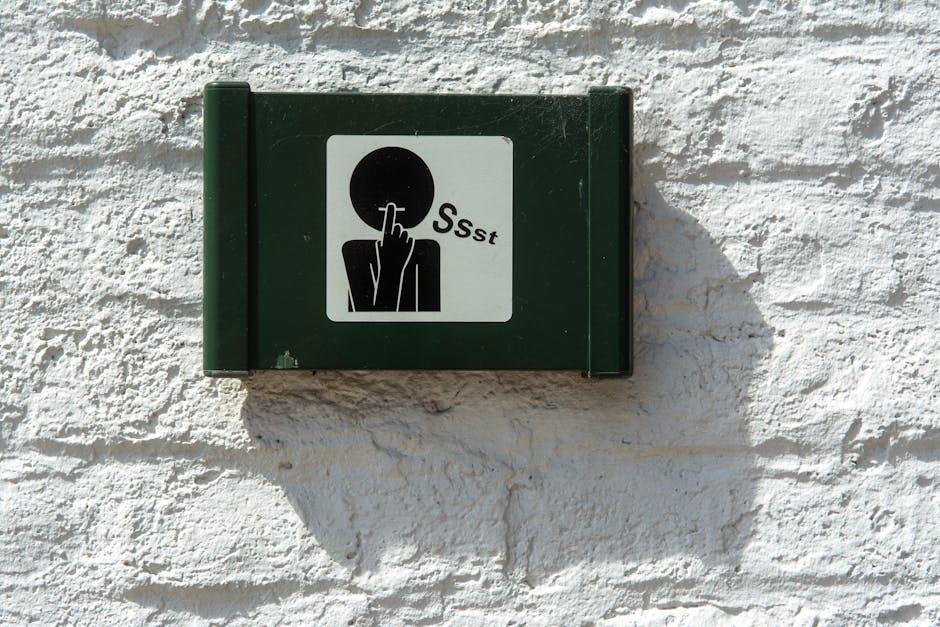In an age dominated by constant digital chatter, the humble notification has become both a helper and a harbinger of distraction. Yet, a subtle shift is emerging in how these alerts make their presence known. Enter silent notifications: quietly appearing in the background, they promise to keep us informed without demanding our immediate attention. But is this understated approach a fleeting fad or the dawn of a new trend in our digital lives? This article explores the rise of silent notifications and what they might mean for the future of communication.
Silent Notifications and User Attention Balancing the Line Between Alert and Distraction

In an age where digital interruptions are constant, silent notifications have emerged as a subtle yet effective way to keep users informed without overwhelming their senses. These notifications glide into the user’s awareness with a gentle vibration or a subtle visual cue, avoiding intrusive sounds or flashing alerts. This approach respects the user’s focus, allowing them to prioritize what truly demands immediate attention and deferring less critical information for when it’s convenient.
Striking the right balance requires thoughtful design, considering both timing and context. Key factors that influence the effectiveness of silent notifications include:
- User customization: Allowing users to tailor notification preferences enhances satisfaction and control.
- Content relevance: Prioritizing messages based on importance reduces noise.
- Environmental awareness: Adjusting alerts based on location or activity respects user situations.
Here’s a quick comparison of different notification styles and their typical user impact:
| Notification Type | Attention Level | Distraction Risk |
|---|---|---|
| Audible Alert | High | High |
| Silent/Vibration | Medium | Low |
| Badge/Icon Only | Low | Minimal |
The Psychological Impact of Silent Notifications on Productivity and Wellbeing

Silent notifications subtly shift the way we interact with digital alerts, reducing auditory distractions but not eliminating the cognitive load they impose. Unlike traditional notifications that demand immediate attention through sound or vibration, silent ones linger quietly, often unnoticed yet persistently present. This can lead to a paradoxical effect: users might experience a continuous low-grade distraction as their minds intermittently scan for updates, which interrupts deep focus and flow states. Over time, this can contribute to mental fatigue and a sense of fragmented attention, undermining overall productivity even though the device appears to be “silent.”
On the wellbeing front, silent notifications can foster a double-edged relationship with technology. While they minimize acute stress from loud interruptions, they can also trigger a subtle form of anxiety known as “notification anticipation.” Users remain on alert, periodically checking their devices to resolve the uncertainty of whether a notification has arrived. This behavior can impact sleep patterns, increase screen time, and propagate an unconscious tethering to digital environments. The psychological toll might be measured in:
- Elevated baseline stress levels
- Diminished ability to relax
- Reduced satisfaction with leisure activities
Below is a simple comparison highlighting the trade-offs between audible and silent notifications:
| Aspect | Audible Notifications | Silent Notifications |
|---|---|---|
| Immediate Awareness | High | Low |
| Disruption Level | High | Moderate |
| Cognitive Load | Moderate | High (due to anticipation) |
| Effect on Stress | Spikes | Steady but subtle |
Designing Effective Silent Notifications for Seamless Digital Experiences

Crafting silent notifications demands a delicate balance between visibility and subtlety. The goal is to ensure users stay informed without the common intrusions of sound or vibration. To achieve this, focus on contextual relevance and prioritization. Notifications should adapt to the user’s current activity, avoiding interruptions during critical tasks or downtime. Utilizing visual cues like subtle badges, edge lighting, or smart banners can convey important updates while maintaining a calm digital environment. Designers must also consider customization options, granting users the power to choose which alerts remain silent and which require immediate attention.
- Context-Aware Delivery: Adjust notification timing and intensity based on user behavior.
- Visual Prioritization: Design hierarchy ensures essential info stands out without noise.
- User Customization: Empower users to personalize silent vs. audible alerts.
- Minimal Distraction: Keep interruptions gentle but informative.
| Notification Type | Silent Variant | Best Use Case |
|---|---|---|
| Message Alert | Badge Count | Non-urgent updates |
| App Update | Smart Banner | Inform without interrupting |
| Reminders | Edge Lighting | Subtle prompts |
| Social Mentions | Quiet Popup | Passive engagement |
Beyond technical execution, silent notifications redefine digital courtesy by honoring user attention-a scarce and valuable resource in today’s hyper-connected world. When designed thoughtfully, they cultivate engagement without fatigue, fostering a seamless dialogue that feels natural rather than disruptive. This approach not only enhances user satisfaction but encourages longer app interaction and trust, subtly transforming how we communicate in digital spaces.
Best Practices for Implementing Silent Notifications Across Different Platforms

Mastering silent notifications requires recognizing the unique quirks and capabilities of each platform. For instance, iOS offers more granular control over notification sound and visibility, allowing developers to use content-available flags to refresh app content silently in the background. Android, meanwhile, demands careful channel configuration to avoid alerting users unintentionally. Cross-platform frameworks like Flutter or React Native can simplify development but necessitate extra debugging to handle subtle platform-specific behaviors. Incorporating adaptive strategies such as user-defined notification preferences can significantly enhance engagement without intruding on user experience.
In practice, adopting silent notifications effectively hinges on several key steps:
- Ensure minimal battery and data consumption: Avoid unnecessary background activity that could drain resources.
- Use silent notifications for meaningful updates only: Avoid spamming with trivial background pings that can quickly erode trust.
- Test across multiple devices and OS versions: Notification behavior can differ vastly between older and newer builds.
- Provide clear user controls: Empower users to customize their experience to suit their preferences.
| Platform | Silent Notification Support | Key Consideration |
|---|---|---|
| iOS | Yes (Content-Available Flag) | Background refresh limits |
| Android | Yes (Notification Channels) | Channel importance settings |
| Web | Limited (Service Workers) | Browser permissions |
In Conclusion
As silent notifications quietly weave themselves into the fabric of our digital lives, they invite us to reconsider how we engage with the constant stream of information around us. Whether they become the new standard or remain a subtle alternative, their emergence signals a shift in the delicate balance between staying informed and preserving our peace. In the end, the true impact of silent notifications will unfold not just in our apps, but in the rhythms of our daily attention.














